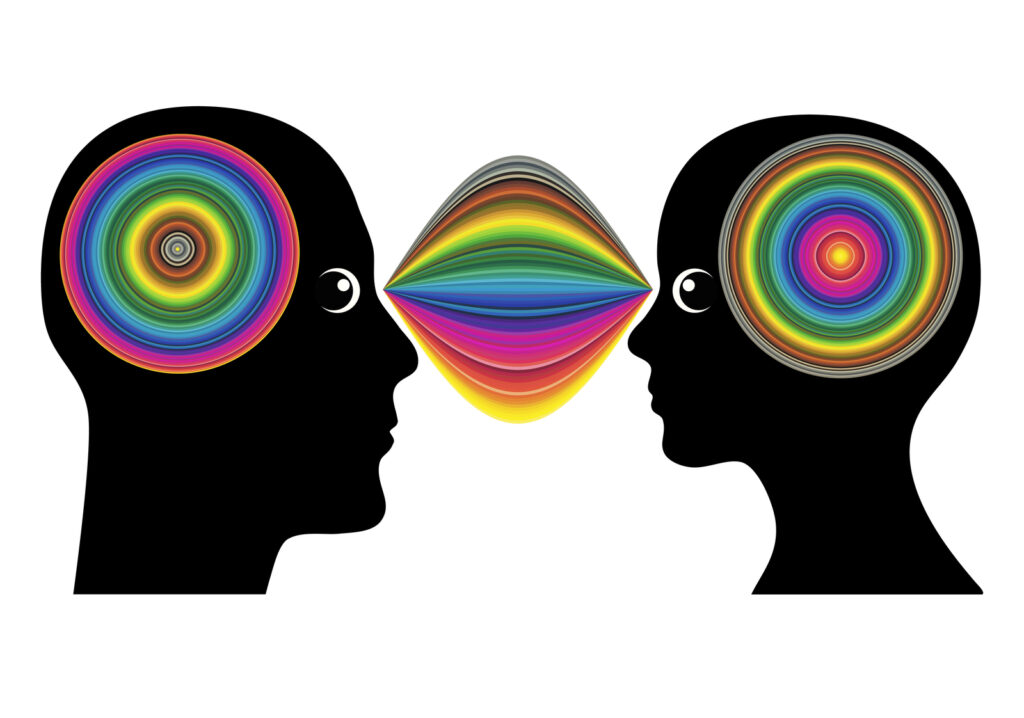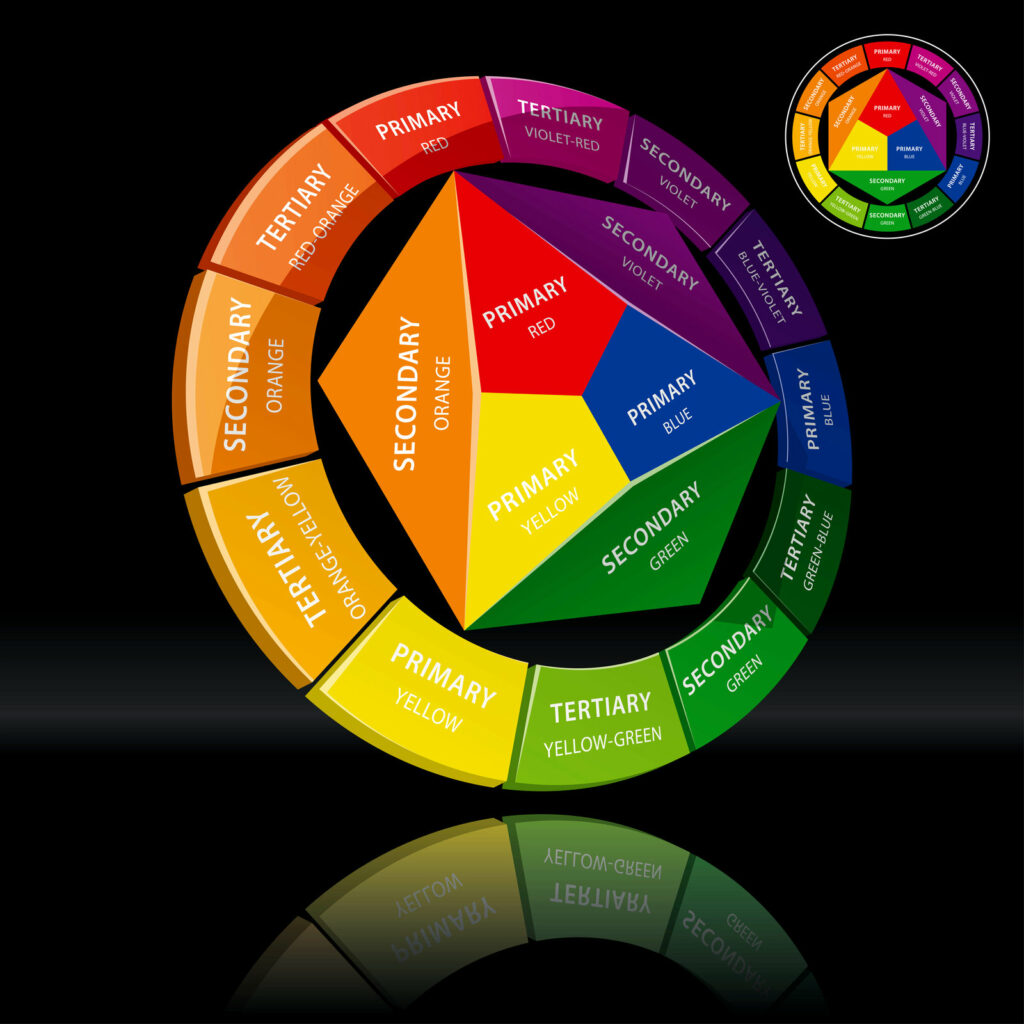Color Theory Basics investigates the psychological impact of color on our lives. Color theory is the study of how humans see and interact with different colors, and it’s important for a wide variety of disciplines – from marketing to interior design. This article will explore how color works and its effects on mood, behavior, and overall perception.
The basics of color theory start with understanding the three primary colors: red, yellow, and blue. When these three colors are combined in various ways they create secondary and tertiary colors such as purple or orange. Additionally, different hues can be created when pure primary or secondary colors are mixed with white or black to produce lighter or darker shades. Furthermore, tints are created when gray is added to a pure hue while tones are produced by adding both gray and black together.
Colors Psychological Effects
Colors can have a powerful effect on how we think and feel. While the color theory has been around for centuries, it’s only recently that psychological experts are beginning to uncover the profound impact certain colors can have on our moods. A new investigation by researchers at the University of Oxford aims to explore this further and reveal how different shades of color can affect our psychology in surprising ways.
The team is looking at various factors including how different colors might trigger subconscious behaviors or evoke particular emotions. They’re also investigating how long-term exposure to specific hues could potentially influence mental health over time. By delving into the effects of color theory, they hope to gain valuable insight into why some people prefer certain shades over others, as well as understand more about their potential therapeutic benefits. The team hopes to gain valuable insight into why some people prefer certain shades over others, as well as understand more about their potential therapeutic benefits.
Cultural Influence on Perception

Culture plays an important role in influencing how people perceive the world around them. Color theory, in particular, can be used to illustrate how different societies view color symbolism and its impact on the human experience.
Color has become a critical aspect of many cultures across time, with some even using it as a form of communication or expression. For example, red is widely associated with danger and excitement while blue is linked to peace and calmness. By examining these emotional associations with colors, we can gain insight into the beliefs of various cultures regarding what each hue symbolizes.
The study of color theory is complex because it involves both physical properties (i.e., wavelengths) as well as psychological components (i.e., emotions).
How Color Affects Moods & Behaviors
The psychological impact of color has been the subject of intense study for decades. Color theory is the collection of principles used to create harmonious color combinations found in nature and art. It is the study of how color affects moods, feelings, and behaviors. Color Psychology and the Meaning of Red The color red is associated with heat and energy. It is a very powerful color with intense emotions such as love, anger, passion, sexuality, and excitement.
Color psychologists suggest that certain colors can influence human psychology in a variety of ways. Reds are thought to evoke feelings of excitement and passion, while blues are linked to promoting productivity and calming emotions. Yellows are associated with optimism and cheerfulness, while greens often represent nature and balance. Different shades, tones, tints, and saturations of a single hue can also drastically change its emotional effect on us as individuals.
Research Findings & Implications
Recent research has explored the psychological impact of color theory, on how colors influence our moods, decision-making processes, and even behaviors. Investigating this topic further, a team of researchers from the University of Colorado Boulder studied how certain colors can evoke certain responses in people. Their findings were quite revealing.
The results showed that warm colors are more likely to be associated with positive emotions than cool colors. Red was found to increase feelings of energy and arousal while blue induced feelings of calmness and relaxation. Additionally, yellow was mostly linked to happiness and optimism while green evoked a feeling of refreshment or renewal. Furthermore, the study also revealed that darker shades indicate power and strength while lighter hues pointed toward delicateness or fragility.
Applications in Everyday Life
The psychological impact of color theory has been studied for centuries. From interior design to advertising, the use of color has been a key factor in how people interact with their environments. But how does color theory affect everyday life?
Color is everywhere we look, and it can be used to influence the way we think, feel and behave. Studies have shown that colors have an immediate effect on our moods, while others suggest they can even affect long-term behavior patterns. For example, research into warm colors such as red suggests they are associated with feelings of anger or aggression whereas cooler colors like blue may be linked to feelings of calmness or relaxation. Understanding these associations could help us create better relationships with our environment by choosing colors that evoke positive emotions.
Conclusion
The study of color theory has long been an important part of the fields of psychology and design. By investigating how different colors affect people psychologically, a great amount of insight can be gained into the relationship between humans and their environment. This article investigated color theory’s psychological impact to better understand its influence on our lives.
Through exploring the emotional connotations associated with various colors, it was discovered that these associations appear to be largely dependent on cultural context and one’s personal experiences. It was also found that certain shades are more commonly linked with particular emotions than others, which could potentially indicate a universal consensus when it comes to interpreting color in terms of emotion. In addition, this research further revealed that hue, saturation, and brightness all have an effect on how we perceive color-related emotions as well.
If you enjoy this article, please don’t forget to share it with other audiences, I’d much appreciate it. Please tell me what you think after reading, thank you for your time.

